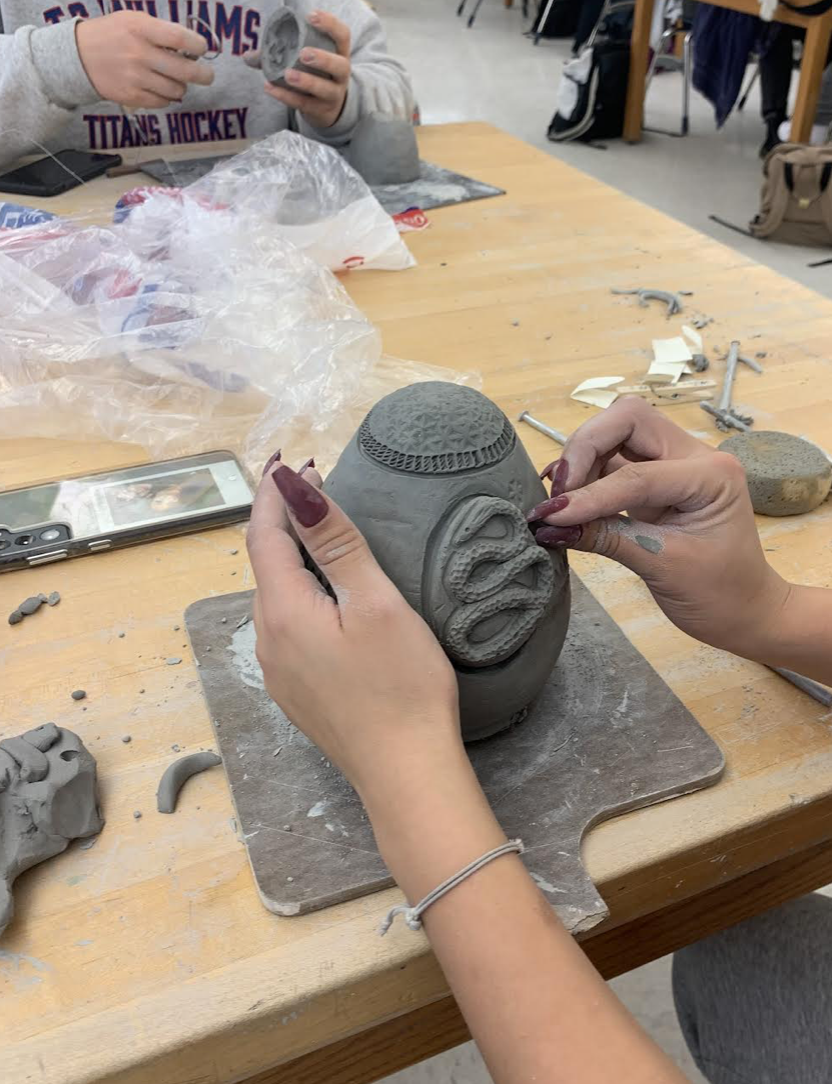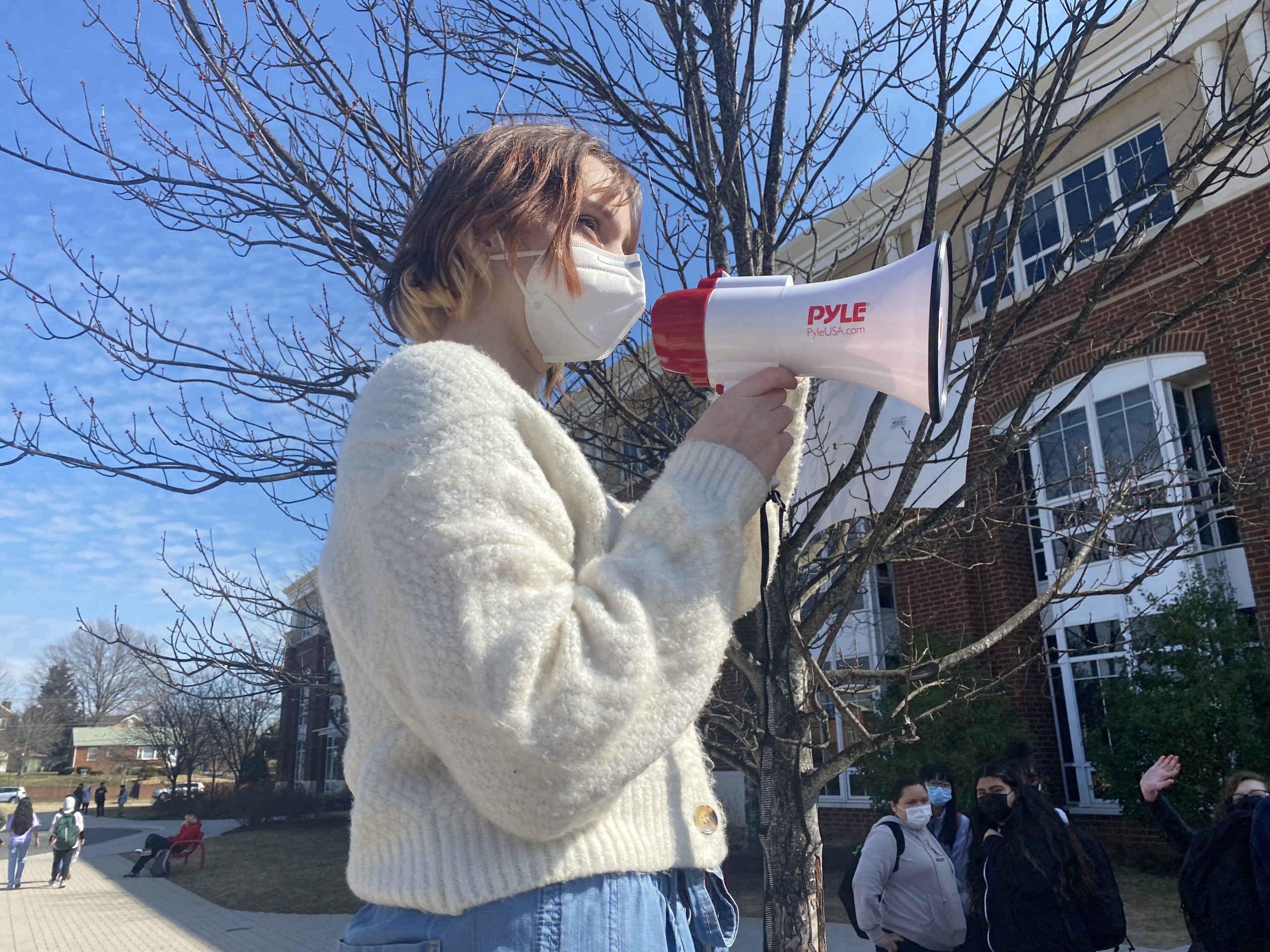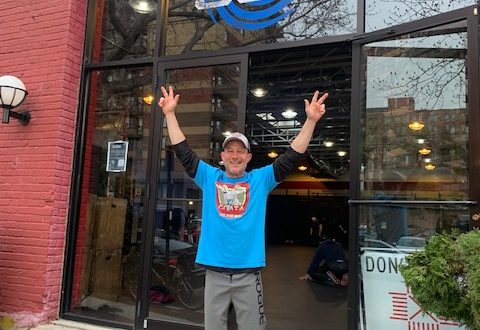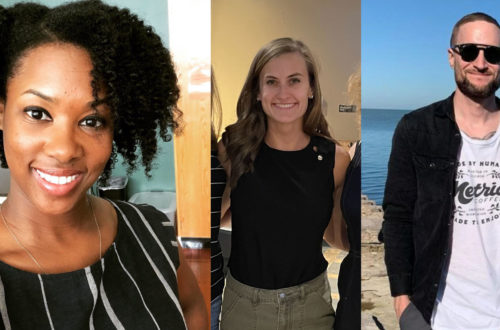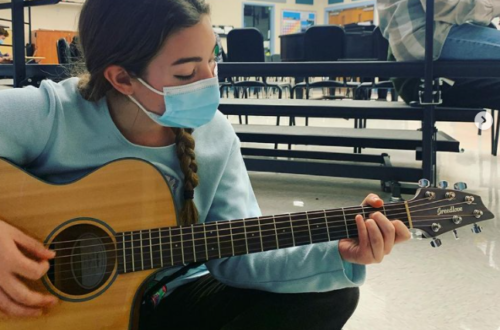Sarah Porter
Staff Writer
Alexandria City High School offers 288 courses, and students are now in the process of choosing which courses they will take next year. Theogony spoke with nine elective teachers on the information students most frequently want to know to get a glimpse into some. These courses include AP Psychology, Criminal Justice, Governor’s Health, Ceramics, Automotive Technology I, AP Seminar/AP Research, Music Theory, Culinary Arts, and Cosmetology.
Culinary Arts: Craig Scheuerman
Introduction to Culinary Arts I entails hands-on, collaborative work in the kitchen designed to teach the needed foundational cooking skills. The course is taught by Craig Scheuerman.
“This class is a team-based, almost daily hands-on course. We get dressed in a uniform and then go over the recipes or techniques of the day. The team organizes who is doing what and [how to] prepare the recipe,” said Scheuerman.
One project students assume over the course is the ‘Heritage Recipe’ project, where students submit their favorite family recipe.
“It is great to see students get recipes from grandparents and family members [for the project]. Food and family are very important across most cultures,” said Scheuerman.
The course’s work is completed in school, paced with the teacher, and, as a reward, students can bring home the food they create.
Students interested in the course should have a love for food and a willingness to try new things. Tasting is an essential part of the course as well as the ability to work within a team, as it is team-based.
“This is the best class in the school and it is one of the most important life skills you will ever learn,” said Scheuerman.
Ceramics I: Beth H. Coast
Ceramics I is the perfect course for those who love working with their hands and are not afraid to get a little dirty (because it all washes off). Students in the course can curate functional and non-functional works of art to their liking. The course is taught by Beth Coast.
Ceramics I is perfect for beginners who enjoy independent work. Students have the freedom to create their sketches and ideas, as long as they follow the rubric.
“We start with the basics, beginning with pinch pots, then progress to coil and slab, where we make mugs. We then make lidded jars and wall hanging pieces,” Coast said. “Students will have the opportunity for an independent assignment at the end of the year. I also show students how to begin throwing on the wheel, although this is not mandatory.”
Most of the class time is dedicated to art-making, so very few of the assignments are brought home in the process.
“Students may need to create sketches at home,” said Coast.
Ceramics I can teach patience as it is shows how slow, productive progress ultimately leads to the best version of an art piece. “They are assigned a project and have plenty of time for completion. I’d rather have students take longer to create a piece that has excellent craftsmanship instead of rushing and having it look sloppy,” said Coast.
Cosmetology: Nikki Dowdell
Cosmetology is a two-year sequential CTE course taught by Ms. Dowdell and involves the studying of hair, skin, nails, and related care. In two words, Ms. Dowdell would describe the class as “exciting” and “fun.” The course incorporates both collaborative and independent work that is in some areas self-paced and in others paced with the teacher.
Students taking the course can look forward to several exciting projects to exhibit their hair and makeup talents. One of these projects encompasses doing hair and makeup for attendees of the annual Junior Reserve Officer Training Corps (JROTC) spring ball.
“We participate in a lot of different things — we do photoshoots and visit the seniors at the recreation center [and do their hair and makeup],” said Dowdell.
Students may receive their cosmetology license upon completion of both courses, Cosmetology I and Cosmetology II.
Child Development
To those who prefer a small, interconnected classroom environment wherein they can learn more about themselves and their peers, Child Development might make the top of your course selection list.
“Your classmates become your friends. It’s almost like a mini family, in a way,” said Yabesera Shimelis, a senior taking the course.
“You learn more about yourself in this class than anything else,”
Before the pandemic, students visited elementary schools to read to the students.
“We learn to do presentations and gain teaching experience,” said Shimelis.
“We also make our class lessons — that’s a big thing,” said Allison Miranva, a junior taking the course.
Despite its name, the Child Development course is not designated only for students who wish to pursue a teaching career.
“You don’t have to be an elementary teacher; it could be any type of working with kids. You are learning about children in an administrative type of condition,” said Ms. Wilson, a teacher of the course.
The course involves both collaborative and independent projects. In the first part of the year, work given involves mostly assignments until it transitions into a mainly project-based course. When projects are given, they are self-paced and about half of that project must be completed outside of the course.
“It’s a lot of independent work when it comes to learning about our development,” said Ashanti Veney-Baah, a senior taking the course.
Shimelis said, “I feel that this class truly helps you in [your] real life because you have to communicate with others and sometimes present.”
Dual Enrollment (DE) Medical Terminology with Anatomy and Physiology
Dual Enrollment (DE) Medical Terminology with Anatomy and Physiology is offered to grade 10 students already enrolled in the Governor’s Health Science Academy. It is enrolled through the GWU School of Medicine and Health sciences.
“This is a foundational-level course that helps to build knowledge of anatomy, physiology, and medical language. We learn about the major body systems, the structures of each system, and how they function,” said Ms. Evans, the teacher of the course.
The course involves hands-on activities, such as building models, creating diagrams, and following labs. Additionally, the projects involve researching information and analyzing case studies. These projects are assigned a mix of collaborative and independent work that is paced with the teacher.
Outside of projects completed during class, students must dedicate two to three hours a week to studying and completing assignments.
Advanced Placement (AP) Psychology
Advanced Placement (AP) Psychology is an introductory course that mimics that of a college psychology 101 course. Though the course provides the basics of psychology, it also delves into foundational theories, neurobiology, and the anatomy of the brain.
“It’s an interesting, fun, yet fast-paced course. It’s incredibly relevant to students and is a course lots of students enjoy taking, but it does take a good amount of work and dedication to be successful,” said Ms. Horwat, a teacher of the course.
Class assignments incorporate both collaborative and independent learning. For example, in terms of collaborative work, students complete group reviews to practice concepts. Afterward, students may review the concepts they learned independently.
Students must maintain their dedication to the class outside of school hours. The course follows a flipped classroom style, wherein students complete notes at home (video notes typically 10-15 minutes long) and students practice concepts learning during class time.

